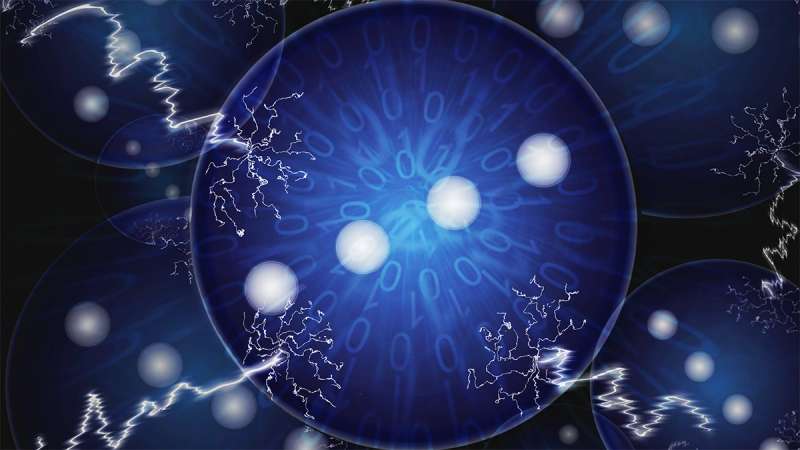Ion qubits offer early glimpse of quantum error detection

Computers based on quantum physics promise to solve certain problems much faster than their conventional counterparts. By utilizing qubits—which can have more than just the two values of ordinary bits—quantum computers of the future could perform complex simulations and may solve difficult problems in chemistry, optimization and pattern-recognition.
But building a large quantum computer—one with thousands or millions of qubits—is hard because qubits are very fragile. Small interactions with the environment can introduce errors and lead to failures. Detecting these errors is not straightforward, since quantum measurements are a form of interaction and therefore also disrupt quantum states. Quantum physics presents another wrinkle, too: It's not possible to simply copy a qubit for backup.
Scientists have come up with clever ways to detect errors and keep them from spreading. But so far, a complete error detection protocol has not been tested in experiments, partly due to the difficulty of creating controlled interactions between all of the necessary qubits.
Now, in a recent article published in Science Advances , researchers at the Joint Quantum Institute tested a full procedure for encoding a qubit and detecting some of the errors that occur during and after the encoding. They applied a scheme that distributed the information of one qubit among four trapped ytterbium ions—themselves also qubits—using a fifth ion qubit to read out whether certain errors had occurred. Ions provide a rich set of interactions, which allowed scientists to link the fifth ion qubit with the other four at will—a common requirement of error detection or correction schemes. With this approach, the scientists detected nearly all of the single-ion errors, performing more than 5000 runs of the full encoding and measurement procedure for a number of different quantum states. Additionally, the encoding itself didn't appear to introduce errors on multiple ions at the same time, a feature that could have spelled doom for error detection and correction in ions.
Although the result is an early step toward larger quantum memories and quantum computers, the authors say it demonstrates the potential of qubit protection schemes with trapped ions and paves the way toward error detection and eventually error correction on a larger scale.
More information: Norbert M. Linke et al. Fault-tolerant quantum error detection, Science Advances (2017). DOI: 10.1126/sciadv.1701074
Journal information: Science Advances
Provided by Joint Quantum Institute





















